Are you an avid baker who wants to take your baking game to the next level? Choosing the right stand mixer can make all the difference in your baking experience. Stand mixers are versatile and powerful tools that can handle a variety of tasks, from mixing dough to whipping cream. With so many options available on the market, it can be overwhelming to choose the right one. In this article, we will provide you with a comprehensive guide on how to choose the best stand mixer for your baking needs.

When it comes to choosing a stand mixer, there are several factors to consider. Understanding your baking needs, evaluating the power and performance, and choosing the right attachments are just a few of the key features you should consider. Additionally, you should consider the size and weight, material and design, and price and value when selecting the right mixer for you. With all these factors to consider, it’s essential to take your time and do your research to ensure you make an informed decision.
In this article, we will provide you with a step-by-step guide on how to choose the best stand mixer for your baking needs. We will cover everything from understanding your baking needs to evaluating the power and performance of different mixers. We will also provide you with a list of top stand mixer brands and considerations for choosing the right mixer for small batches. By the end of this article, you’ll be equipped with all the knowledge you need to make an informed decision and take your baking game to the next level.
Key Takeaways
- Understanding your baking needs is crucial when choosing a stand mixer.
- Evaluating the power and performance, choosing the right attachments, and considering the size and weight are important factors to consider.
- Doing your research and taking your time to make an informed decision can help you choose the best stand mixer for your baking needs.
Why Choose a Stand Mixer
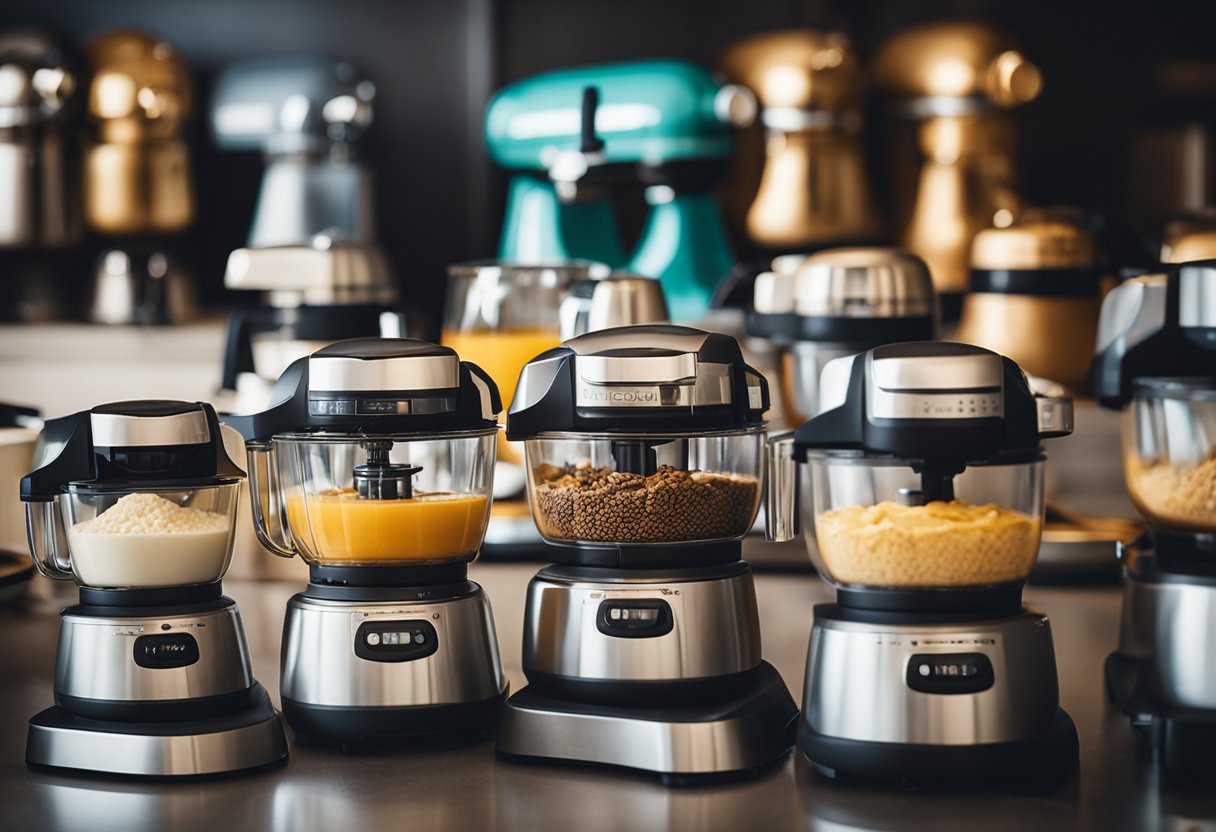
If you enjoy baking, a stand mixer is an essential kitchen tool that can help you save time and effort. Unlike hand mixers, stand mixers are hands-free, which means you can mix, whisk, and knead without having to hold the mixer. Here are some reasons why you should consider buying a stand mixer:
More Power
Stand mixers are more powerful than hand mixers, which means they can handle tougher doughs and mixtures. This is especially useful if you’re making bread or pizza dough, which can be difficult to mix by hand.
Hands-Free Mixing
One of the biggest advantages of a stand mixer is that it’s hands-free. This means you can mix, whisk, and knead without having to hold the mixer. This is especially useful if you have a lot of mixing to do, as it can save you time and effort.
Versatility
Stand mixers are versatile kitchen tools that can be used for a variety of tasks. Many stand mixers come with attachments that allow you to do everything from grinding meat to making pasta.
Capacity
Stand mixers come in a variety of sizes, which means you can choose one that is the right size for your needs. If you’re baking for a large family or making big batches of dough, a larger stand mixer might be the best choice for you.
Durability
Stand mixers are built to last, which means you can expect to get years of use out of your mixer. This is especially important if you’re an avid baker who uses your mixer frequently.
Overall, a stand mixer is a great investment for anyone who enjoys baking. With its hands-free mixing, power, and versatility, a stand mixer can help you save time and effort in the kitchen.
Understanding Your Baking Needs
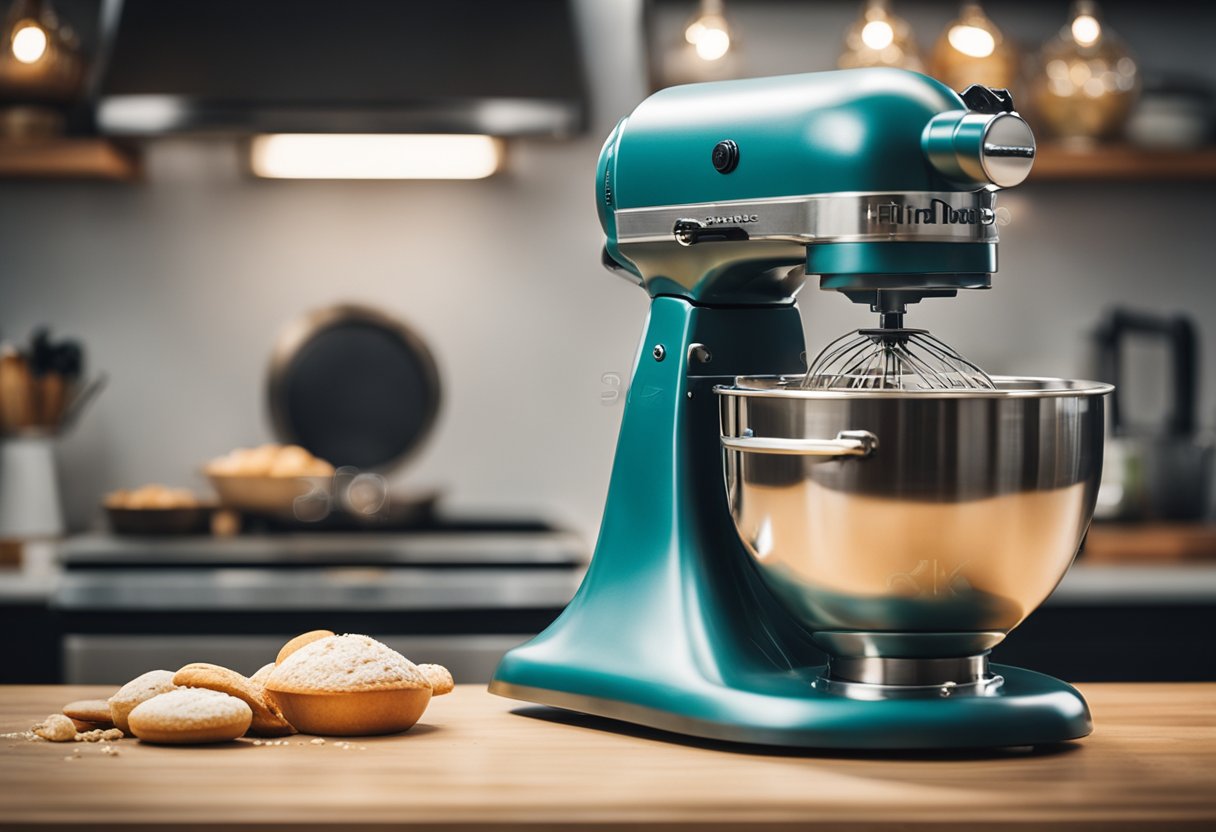
Choosing the right stand mixer for your baking needs requires a good understanding of what you will be using it for. Consider the following factors when determining your baking needs:
Baking Frequency
How often do you bake? If you bake frequently, you’ll want a stand mixer that can handle heavy use. Look for a mixer with a powerful motor and a large capacity bowl.
Types of Baked Goods
Consider the types of baked goods you make. If you make a lot of dough, pasta, or pizza dough, you’ll want a mixer with a dough hook attachment. If you make a lot of frosting, meringue, or other desserts that require whipped egg whites, you’ll want a mixer with a whisk attachment.
Mixing Speeds
Different recipes require different mixing speeds. Look for a stand mixer with multiple speed settings to ensure that you can mix ingredients at the right speed for each recipe.
Bowl Size
The size of the bowl on your stand mixer is important. If you make large batches of baked goods, you’ll want a mixer with a large bowl. If you only make small batches, a smaller bowl will suffice.
Ease of Use
Consider how easy the stand mixer is to use. Look for a mixer with an easy-to-use control panel and attachments that are easy to attach and remove.
Cleaning
Cleaning your stand mixer can be a chore, so look for a mixer that is easy to clean. Some mixers have dishwasher-safe attachments, which can save you time and effort.
Brand Reputation
The brand of your stand mixer is important. Look for a brand with a good reputation for quality and durability.
Price
Stand mixers can vary greatly in price. Determine your budget and look for a mixer that fits within your price range.
By considering these factors, you can choose the right stand mixer for your baking needs and take your baking to the next level.
Key Features of Stand Mixers
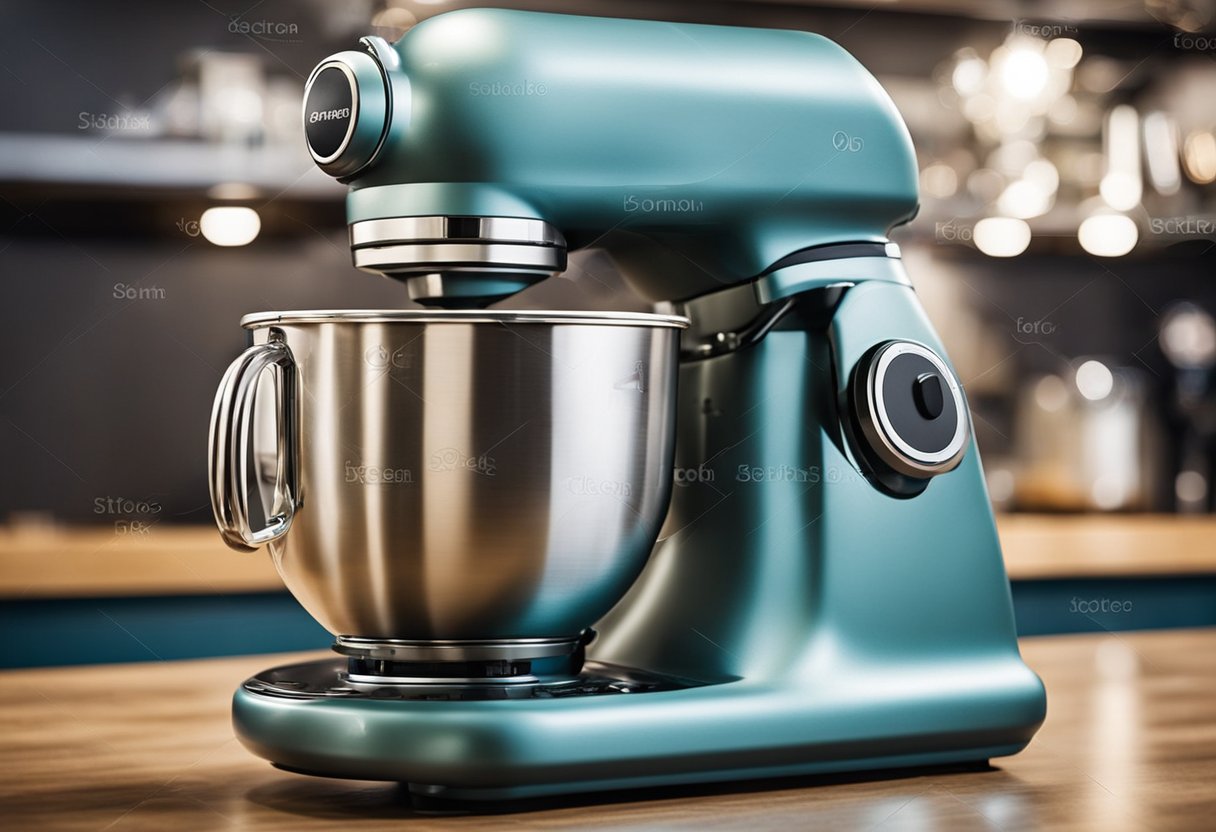
If you’re in the market for a stand mixer, there are a few key features you should consider before making your purchase. Here are some of the most important features to keep in mind:
Power
One of the most important features of a stand mixer is its power. Look for a mixer with a high wattage motor, which will allow you to mix even the toughest doughs and batters with ease. A powerful mixer will also be able to handle larger quantities of ingredients without struggling.
Attachments
Most stand mixers come with a range of attachments, including a whisk, dough hook, and beater. Some models may also come with additional attachments, such as a pasta maker or a meat grinder. Consider what types of foods you like to make and choose a mixer with attachments that will be useful to you.
Speeds
Most stand mixers come with multiple speed settings, typically ranging from 3 to 10 speeds. Look for a mixer with at least 10 speed settings, which will give you more control over the mixing process. A mixer with a motor that ramps up to the speeds will also help protect the unit.
Design
There are two main types of stand mixers: bowl-lift and tilt-head. Bowl-lift mixers have a lever that raises and lowers the mixing bowl, while tilt-head mixers have a head that tilts back to allow access to the bowl. Consider which design will be most convenient for you based on your kitchen setup and personal preferences.
Timer
Some stand mixers come with a built-in timer, which can be a helpful feature when following recipes that require precise mixing times. A timer can also help prevent over-mixing, which can lead to tough baked goods.
Stability
A stable stand mixer is essential for safe and efficient mixing. Look for a mixer with a heavy base and non-slip feet to prevent it from moving around on your countertop. Some models may also have shock-absorbing features to reduce vibrations and noise.
In conclusion, when choosing a stand mixer, look for a model with a powerful motor, useful attachments, multiple speed settings, a convenient design, a built-in timer, and stable construction. With these features, you’ll be able to mix up a variety of delicious recipes with ease.
Evaluating the Power and Performance
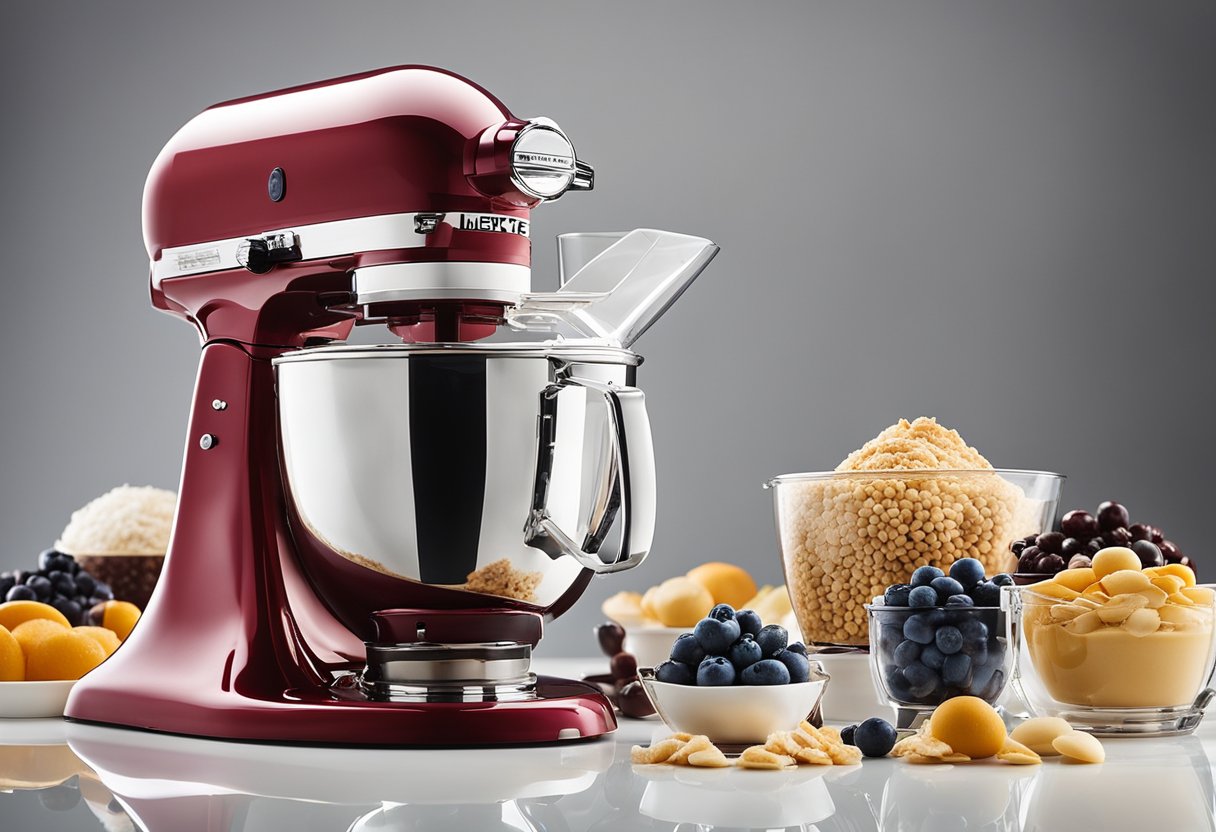
When it comes to stand mixers, evaluating the power and performance is crucial in choosing the right one for you. A powerful motor is essential for mixing and kneading dense doughs. However, wattage isn’t always an accurate indicator of a mixer’s power output. Some models may use more wattage to operate than others, and power output may be less than denoted.
To ensure that you get the right stand mixer for your needs, consider the following factors when evaluating power and performance:
Motor Power
The motor power is the most crucial factor in determining the mixer’s performance. A powerful motor is essential for handling heavy-duty mixing tasks such as kneading dough or whipping cream. Look for a mixer with a motor power of at least 500 watts for home use.
Speed Settings
A mixer with multiple speed settings gives you more control over the mixing process. Most stand mixers come with at least three-speed settings: low, medium, and high. Some models may have up to 12-speed settings, allowing you to fine-tune the mixing process to achieve the desired results.
Mixing Action
The mixing action is another critical factor in determining a mixer’s performance. A mixer with a planetary mixing action is more efficient at mixing ingredients than one with a stationary mixing action. A planetary mixing action ensures that the beater reaches all parts of the bowl, resulting in a more thorough mix.
Capacity
The mixer’s capacity is another crucial factor to consider when evaluating power and performance. A mixer with a larger capacity can handle more significant quantities of ingredients, making it ideal for large families or people who love to bake in large quantities.
Conclusion
Evaluating the power and performance of a stand mixer is essential in choosing the right one for your needs. Consider the motor power, speed settings, mixing action, and capacity to ensure that you get the best mixer for your baking needs.
Choosing the Right Attachments
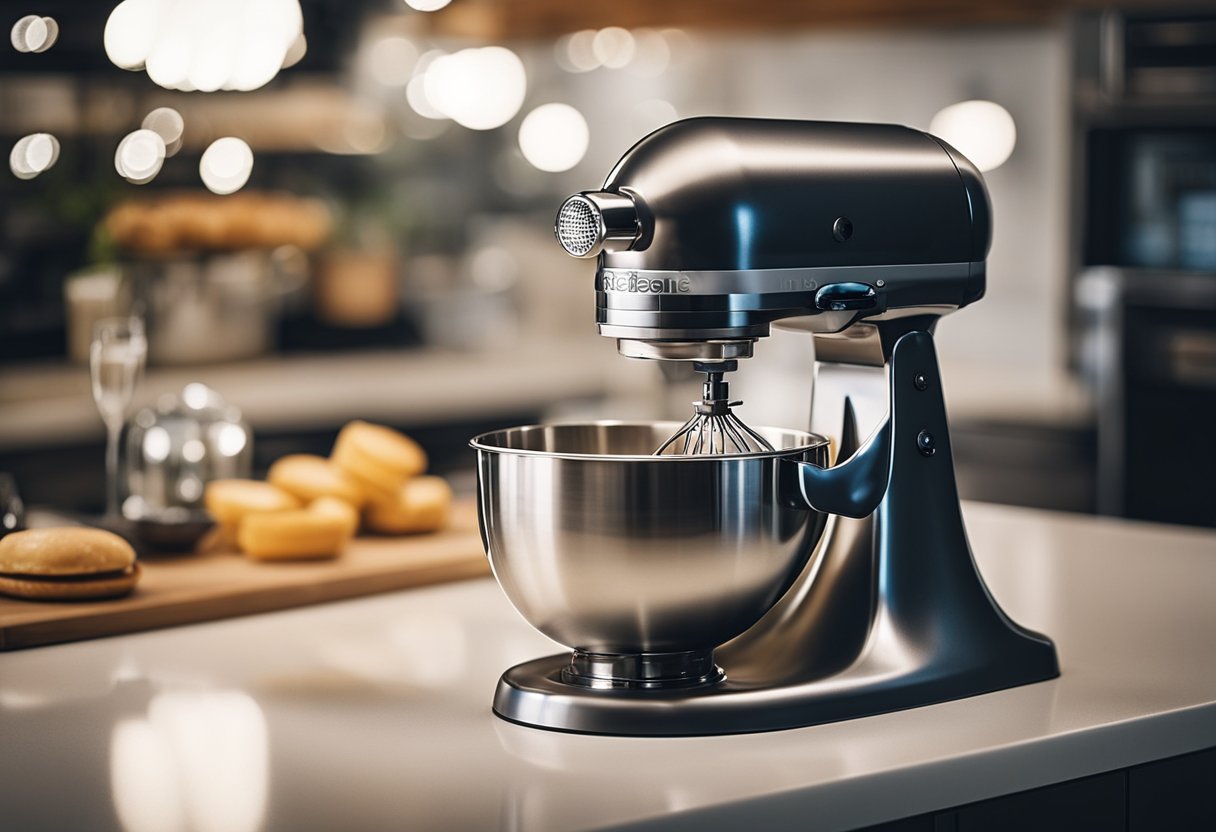
One of the best things about a stand mixer is the ability to add attachments to make it more versatile. Here are some things to keep in mind when choosing attachments for your stand mixer:
Consider Your Needs
Think about what you plan on using your stand mixer for. Are you a baker who makes a lot of bread? Then you’ll want to invest in a dough hook. Do you make a lot of whipped cream or meringue? Then a wire whisk attachment is a must-have. If you’re not sure what attachments you need, start with the standard attachments that come with most mixers: the flat beater, dough hook, and wire whisk.
Compatibility
Make sure the attachments you choose are compatible with your stand mixer. Most brands have their own line of attachments that are designed to fit their mixers. For example, all KitchenAid brand hub attachments fit every stand mixer model. Be sure to use only authentic attachments with your mixer to protect your machine and your warranty.
Quality
Invest in high-quality attachments that are built to last. Cheap attachments may seem like a good deal, but they can break easily and won’t perform as well as higher-quality attachments. Look for attachments made from durable materials that can withstand heavy use.
Accessories
In addition to attachments, there are also a variety of accessories available for stand mixers. These can include things like pouring shields, bowl covers, and extra mixing bowls. Consider which accessories will make your life easier and invest in those that are most useful to you.
Choosing the right attachments for your stand mixer can make a big difference in the types of recipes you can make and how easy they are to prepare. Keep your needs in mind, choose high-quality attachments, and don’t forget about accessories that can make your life easier. With the right attachments, you’ll be able to tackle any recipe with ease and create delicious meals and desserts for your family and friends.
Considering Size and Weight
When it comes to choosing a stand mixer, size and weight are important factors to consider. A large mixer is ideal for those who bake frequently or need to feed a big family. However, it’s essential to keep in mind that larger mixers require a more powerful motor to handle the extra workload, so make sure to choose a mixer with enough power to knead dough effectively.
Another consideration is weight. A heavy mixer is more stable and less likely to shimmy around on your countertop while in use. A lightweight mixer may be easier to move around, but it may also be less stable and prone to wobbling during use.
If you have limited counter space, you may want to consider a more compact mixer. Some mixers are designed to be more space-efficient, taking up less room on your countertop or in your cabinets. However, keep in mind that a smaller mixer may have a smaller bowl size, which can limit the amount of dough or batter you can mix at once.
When it comes to bowl size, there is a range of sizes available. The standard size is between 4.5 and 5.5 quarts, which is large enough to mix a batch of cookies or knead a loaf of bread. If you frequently bake in large quantities, you may want to opt for a larger bowl size. However, keep in mind that a larger bowl may also mean a larger and heavier mixer.
Overall, when considering size and weight, it’s essential to find a mixer that fits your needs and your kitchen space. Consider your baking habits, the amount of counter space you have available, and the size and weight of the mixer you feel comfortable using.
The Importance of Material and Design
When choosing a stand mixer, the material and design of the mixer are important factors to consider. The material of the mixer can affect its durability, performance, and ease of use. The design of the mixer can also impact its functionality, versatility, and appearance in your kitchen.
One important aspect of material to consider is the bowl. The bowl of the mixer can be made from a variety of materials, including stainless steel, glass, and ceramic. Stainless steel bowls are a popular choice because they are durable, easy to clean, and resistant to stains and odors. Some stainless steel bowls even come with handles, making them easier to lift and pour.
The material of the mixer itself is also important. A mixer made from high-quality materials like stainless steel will be more durable and long-lasting than a mixer made from cheaper materials. A mixer with a stainless steel bowl and tilt-head design can be a great choice because it offers both durability and convenience.
The design of the mixer can also impact its functionality. A mixer with a tilt-head design allows you to easily access the bowl and change out attachments. This can be helpful when you are working with different recipes that require different mixing attachments. Additionally, a mixer with a sleek and modern design can add a touch of style to your kitchen.
Overall, the material and design of a stand mixer are important factors to consider when making your purchase. A mixer with a stainless steel bowl and tilt-head design can offer both durability and convenience, while a sleek and modern design can add a touch of style to your kitchen.
Stand Mixer Versus Hand Mixer
When it comes to baking, having the right tools can make all the difference in the world. One of the most important tools in any baker’s kitchen is a mixer. But with so many different types of mixers on the market, it can be difficult to know which one to choose. Two of the most popular types of mixers are stand mixers and hand mixers. In this section, we’ll take a closer look at the differences between these two types of mixers to help you decide which one is right for you.
Hand Mixers
Hand mixers are small, handheld devices that are designed to mix ingredients quickly and easily. They are typically less expensive than stand mixers and take up less space in your kitchen. Hand mixers are also great for small batches of ingredients, making them a popular choice for home bakers.
One of the main advantages of hand mixers is their portability. You can easily move them around your kitchen and even take them with you when you’re on the go. They’re also easy to clean and maintain, with most models featuring removable beaters that can be washed in the dishwasher.
However, hand mixers do have some limitations. They’re not as powerful as stand mixers, which means they may struggle with heavier doughs or thicker batters. They also require more effort on your part, as you’ll need to hold the mixer in place while it’s in use.
Stand Mixers
Stand mixers are larger, more powerful machines that are designed to mix ingredients quickly and efficiently. They typically come with a range of attachments, including a dough hook, whisk, and paddle, making them a versatile choice for any baker.
One of the main advantages of stand mixers is their power. They’re capable of mixing even the thickest doughs and batters with ease, making them a popular choice for professional bakers. They’re also more convenient to use, as you can set them up on your countertop and let them do the work for you.
However, stand mixers do have some drawbacks. They’re typically more expensive than hand mixers and take up more space in your kitchen. They’re also heavier and more difficult to move around, which can be a problem if you have a small kitchen or limited counter space.
Ultimately, the choice between a stand mixer and a hand mixer comes down to your personal preferences and needs. If you’re a casual home baker who only needs to mix small batches of ingredients, a hand mixer may be the best choice for you. But if you’re a serious baker who needs to mix large batches of dough or batter on a regular basis, a stand mixer is definitely worth considering.
Top Stand Mixer Brands
When it comes to choosing a stand mixer, there are a few brands that stand out from the rest. These brands have built a reputation for quality, durability, and versatility. Here are some of the top stand mixer brands to consider:
KitchenAid
KitchenAid is a household name when it comes to stand mixers. They offer a wide range of models, from the classic tilt-head design to the more advanced bowl-lift models. KitchenAid stand mixers are known for their powerful motors, durable construction, and wide range of attachments. Whether you’re a professional baker or a home cook, there’s a KitchenAid stand mixer that’s right for you.
Cuisinart
Cuisinart is another well-known brand in the world of stand mixers. They offer a range of models that are designed to meet the needs of both beginner and advanced bakers. Cuisinart stand mixers are known for their powerful motors, easy-to-use controls, and versatile attachments. They also offer a range of colors to choose from, so you can find a mixer that matches your kitchen decor.
Aucma
If you’re looking for a more affordable option, Aucma is a brand worth considering. While they may not have the same reputation as KitchenAid or Cuisinart, Aucma stand mixers offer a lot of value for the price. They come with a range of attachments, including a dough hook, whisk, and beater, and are designed to be easy to use and clean.
No matter which brand you choose, make sure to read reviews and do your research before making a purchase. A stand mixer is an investment, so you want to make sure you’re getting a model that will meet your needs and last for years to come.
Price and Value Considerations
When it comes to investing in a stand mixer, price is definitely a consideration. But, it’s important to remember that the most expensive mixer isn’t always the best value for your money. Consider your budget and what you’re willing to spend on a mixer that will meet your needs.
Fortunately, there are many options available at various price points. You can find affordable mixers that still offer great value and quality. For example, you can pick up a quality stand mixer for around $100, according to Taste of Home.
When considering the price of a stand mixer, think about how often you’ll use it and what you’ll be using it for. If you’re an avid baker or cook, a more expensive mixer may be worth the investment. However, if you only plan on using it occasionally or for basic tasks, a less expensive mixer may be a better option.
It’s also important to consider the value that a mixer offers. Look for features that will make your life easier and save you time in the kitchen. For example, some mixers come with multiple attachments that allow you to do more than just mix dough or batter. These attachments can include things like a meat grinder, pasta maker, or even a juicer.
In summary, when choosing a stand mixer, consider your budget and what you’re willing to spend. Don’t assume that the most expensive mixer is the best value for your money. Look for features that will make your life easier and save you time in the kitchen, and choose a mixer that meets your needs and fits within your budget.
Ease of Use and Cleanup
When it comes to choosing a stand mixer, ease of use and cleanup are important factors to consider. After all, you want to spend more time baking and less time cleaning up. Here are some things to keep in mind:
Adding Ingredients
Look for a stand mixer that makes it easy to add ingredients. Some mixers have a pouring shield that helps prevent ingredients from splattering out of the bowl. Others have a tilt-head design that allows you to easily add ingredients without having to remove the bowl.
Cleanup
Cleaning up after baking can be a hassle, but some stand mixers make it easier than others. Look for mixers that have dishwasher-safe attachments, which can save you time and effort. Some mixers also have a non-stick coating on the bowl, making it easier to clean by hand.
Dishwasher Safe
If you prefer to clean your stand mixer attachments by hand, make sure they are dishwasher safe. This can save you time and effort, especially if you are baking frequently.
Spatula
A spatula is a handy tool to have when using a stand mixer. Look for mixers that come with a spatula, or have a built-in storage compartment for one. This can help you scrape down the sides of the bowl and ensure that all ingredients are thoroughly mixed.
Overall, choosing a stand mixer that is easy to use and clean can make baking a more enjoyable experience. Keep these factors in mind as you search for the perfect mixer for your needs.
Extra Features and Accessories
Choosing a stand mixer with the right features and accessories can make a big difference in your cooking and baking experience. Here are some extra features and accessories to consider when choosing a stand mixer:
Splash Guard
A splash guard is a plastic lid that fits over the mixing bowl to prevent splashing when you add ingredients. Not all stand mixers come with a splash guard, but it can be a helpful accessory to have, especially when mixing liquids or dry ingredients.
Meat Grinders
Some stand mixers come with meat grinder attachments that allow you to grind your own meat at home. This can be a great feature if you like to make your own sausages, burgers, or meatballs.
Ice Cream Makers
If you love making homemade ice cream, look for a stand mixer with an ice cream maker attachment. This attachment will allow you to churn your own ice cream in the comfort of your own kitchen.
Pasta Makers
Making your own pasta can be a fun and rewarding experience. Look for a stand mixer with a pasta maker attachment if you want to make your own fresh pasta at home.
Kitchen Gadgets
Some stand mixers come with a variety of other attachments and gadgets, such as citrus juicers, food processors, or spiralizers. These attachments can be a great way to get more use out of your stand mixer and expand your culinary horizons.
Overall, when choosing a stand mixer, it’s important to consider the extra features and accessories that will best suit your needs and cooking style. With the right stand mixer, you can take your cooking and baking to the next level.
Choosing the Right Mixer for Small Batches
If you’re someone who only needs to mix small batches of ingredients, you don’t necessarily need a large, expensive stand mixer. In fact, a hand mixer might be a better option for you. Hand mixers are affordable and easy to use, making them perfect for small jobs.
When choosing a mixer for small batches, consider the following:
- Capacity: Look for a mixer with a smaller capacity bowl or beaters. A smaller capacity will allow you to mix smaller amounts of ingredients without wasting space or making a mess.
- Power: A mixer with a lower wattage may be sufficient for small batches. However, if you plan on mixing heavier ingredients like dough, a more powerful mixer may be necessary.
- Attachments: Some mixers come with attachments specifically designed for small batches, like whisk attachments or mini beaters. Look for a mixer with these attachments if you plan on mixing small amounts of ingredients frequently.
- Ease of Use: A mixer that is easy to handle and operate will make mixing small batches a breeze. Look for a mixer with comfortable grips and easy-to-use controls.
Overall, when choosing a mixer for small batches, focus on finding a mixer that is affordable, easy to use, and has a smaller capacity. A hand mixer may be the perfect option for you, but if you prefer a stand mixer, make sure to look for one with a smaller bowl and the appropriate attachments.
Conclusion
Congratulations! You have now learned how to choose the best stand mixer for your kitchen needs. By considering the factors we’ve discussed, such as motor power, bowl capacity, and attachments, you can select a mixer that will make your mixing process more efficient and enjoyable.
Remember to choose a mixer that fits your budget and your specific baking needs. Whether you’re a professional baker or a home cook, there’s a stand mixer out there that’s perfect for you.
Some of the best stand mixers on the market include the KitchenAid Artisan Series, the Cuisinart SM-50BC, and the Hamilton Beach Eclectrics All-Metal Stand Mixer. These mixers offer a variety of features and attachments that can help you create the perfect dough, batter, or frosting.
When using your stand mixer, be sure to follow the manufacturer’s instructions for optimal performance and safety. Always use the appropriate attachment for the task at hand, and never overload the mixer with too much batter or dough.
With your new stand mixer, you’ll be able to mix ingredients with ease and efficiency, giving you more time to focus on the fun part of baking – decorating and enjoying your delicious creations!
Frequently Asked Questions
What should I consider when choosing a stand mixer?
When choosing a stand mixer, you should consider the size of the mixer, the power of the motor, and the number of attachments that come with the mixer. You should also consider the brand and the price of the mixer.
What are the most important features to look for in a stand mixer?
The most important features to look for in a stand mixer include the motor power, the mixing bowl capacity, the number of speed settings, and the type of attachments that come with the mixer.
Can you recommend a stand mixer for a beginner baker?
If you are a beginner baker, we recommend the KitchenAid Classic Series 4.5 Quart Tilt-Head Stand Mixer. It is easy to use, has a powerful motor, and comes with a variety of attachments.
How much power should a stand mixer have for home use?
For home use, a stand mixer should have a motor power of at least 250 watts. However, if you plan on using your mixer for heavy-duty tasks such as kneading bread dough, you should consider a mixer with a motor power of at least 500 watts.
What are the benefits of a stand mixer compared to a hand mixer?
Stand mixers are more powerful than hand mixers and can handle heavier doughs and batters. They also come with a variety of attachments, such as a dough hook, which makes kneading bread dough easier. Stand mixers also free up your hands, allowing you to add ingredients while the mixer is running.
Which stand mixers have the best value for their price?
The KitchenAid Classic Series 4.5 Quart Tilt-Head Stand Mixer and the Hamilton Beach 6-Speed Stand Mixer are both great options for their price. They are both powerful, easy to use, and come with a variety of attachments.




